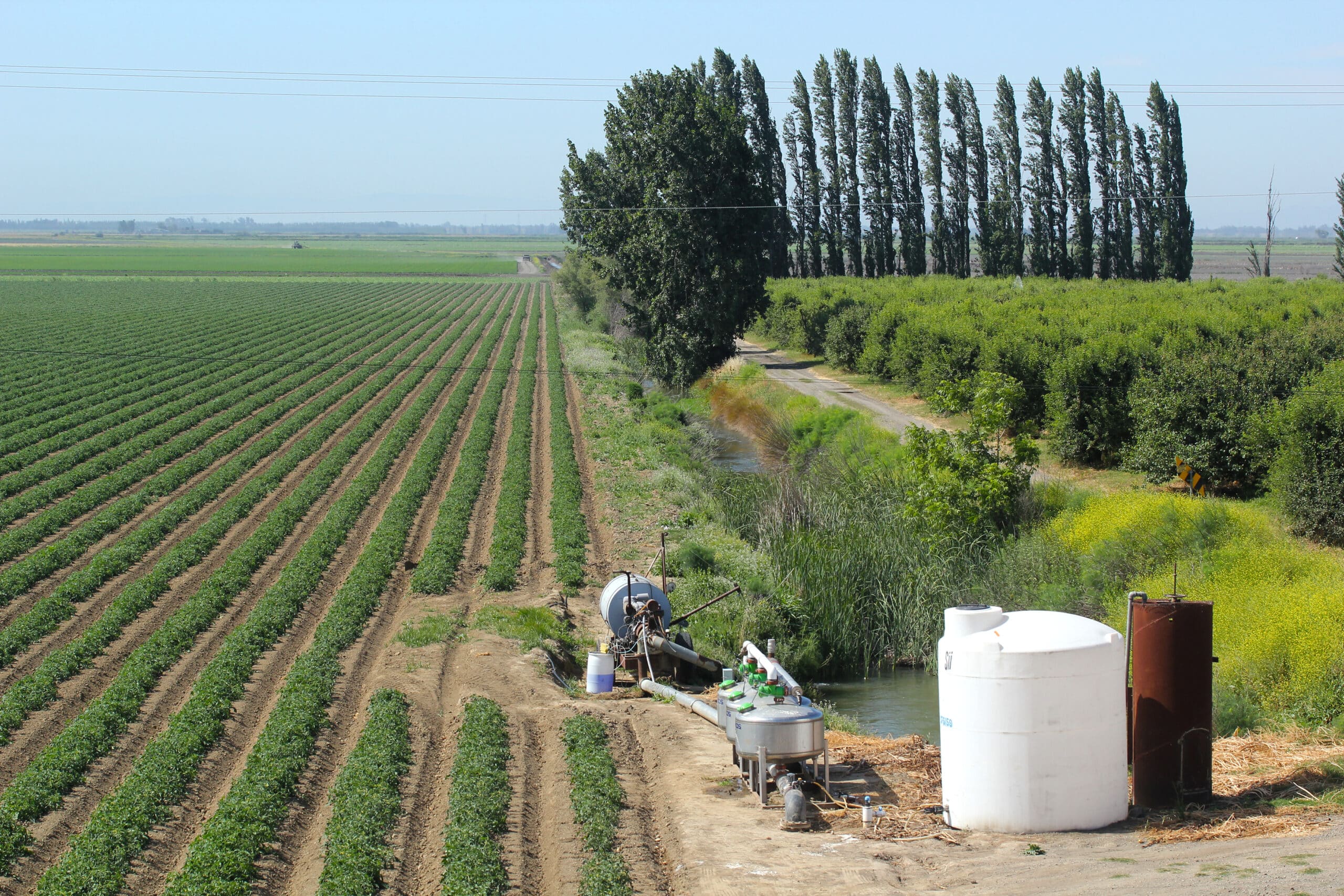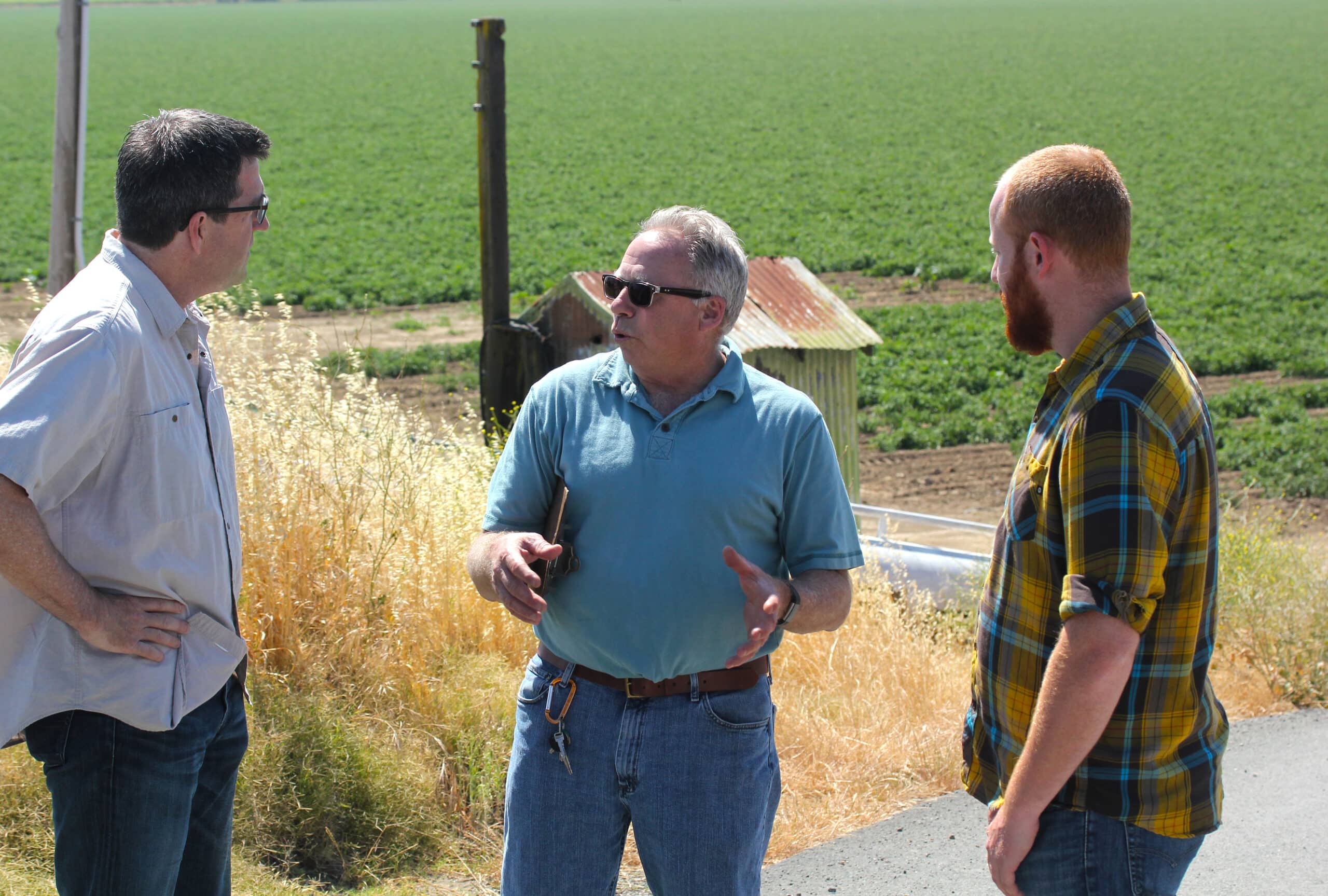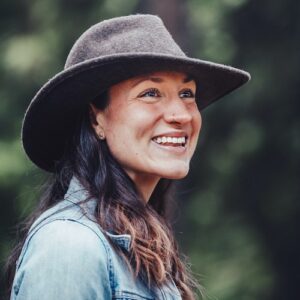Experienced hands navigate new waters
For 40 years, Tom Hester has helped run an agricultural empire on Ryer Island in the Sacramento-San Joaquin River Delta.
His dad managed it before him.
“I’d come down with him as a kid, and I eventually just got to know everybody,” said Hester. “I always found summer work, and I loved it. I wanted to be in agriculture forever.”
Now, thousands of acres of pears, apples and cherries, canning tomatoes, alfalfa and wheat is currently in his experienced hands.

It’s one of the largest operations in the region, with some of the oldest water rights in the state. Like most agricultural production in California, Hester and his team are navigating new regulations set forth by the state after years of historic drought.
Passed in 2015, Senate Bill 88 made it mandatory for those diverting more than 10 acre-feet of surface water per year to install calibrated meters by January 1, 2018. An acre-foot, or one acre covered by one foot of water, is the amount of water used by one or two five-member families in a year.
Hester and nearly 12,000 other diverters were charged with figuring out how to comply.
“To be honest, this wasn’t our choice, and I wasn’t even sure if I wanted my water metered,” said Hester. “It’s a ton of extra work and a lot of extra expense for an operation like ours.”
Under SB88, more than a dozen diversions on the farm would have had to been metered by expensive equipment that can run between $3,000 and $10,000 to install.
Hester started looking for alternatives. The Freshwater Trust (TFT) proposed one. The Delta Watermaster approved it.

From left to right: The Freshwater Trust's California Director Erik Ringelberg, Tom Hester, and The Freshwater Trust's Staff Attorney Chris Thomas
Instead of installing meters, which can often be unreliable, irrigators will be able to meet the requirement of the new law by working with TFT to combine real crop and water management data with state-of-the-art models and remote sensing technology. This alternative will create a more accurate picture of actual water use.
SB88 allows for alternative proposals for compliance where significant technological barriers to the implementation of meters exist. The Delta certainly presents such barriers.
“Metering in the Delta is tricky,” said Erik Ringelberg, California director of The Freshwater Trust. “Twice daily tidal flows, remote locations without power, the use of simple open-pipe siphons instead of pumps, and the theft of equipment in these isolated locations present complications and make current metering inaccurate or exceptionally expensive. Instead, we chose to use an alternative approach that uses remote sensing tools, calibrated at several control points.”
Hester is familiar with the hurdles of both the meters and the nature of the place he farms.
“The ground here is actually lower than the river itself, and a lot of our diversions are actually siphoned,” he said. “It’s a different place than what might have been considered when the plan was being created.”
Ringelberg explained that to get a handle on freshwater in the entire state of California, you have to have a finger on the pulse of the Delta and be forming strong connections with its irrigators.

The Delta has been referred to as the “nexus of California’s statewide water system,” providing water to the San Francisco Bay Area, as well as exports to coastal and southern California.
“This is the center point for the Sacramento and San Joaquin Rivers,” said Ringelberg. “It wouldn’t be an exaggeration to call it the area of greatest freshwater concern in California.”
It’s also among the most agriculturally productive regions in the country, covering more than 1,100 square miles, with nearly 75% in production. The Delta is naturally rich in groundwater, making it resilient to droughts and potential climate change impacts to weather. However, because the islands are surrounded with surface water, it is simply easier to let gravity siphon that water to the fields. And it’s one of the largest estuaries in North America, supporting more than 20 different fish species and hundreds of other plants and animals.
Hester said while they had good water throughout the drought, they’re starting to see a shift to drip irrigation and other efficiency methods across the region.
Many parts of this region have shifted over the past two decades to wine grapes, which require considerably less water than most other crops. The grapes are irrigated using drip lines that run along the top of the roots. This reduces the amount of water lost to evaporation and allows the farmer to fertilize directly on the roots, called fertigation, dramatically reducing runoff of agricultural chemicals.
Hester sees SB88 as an opportunity to true things up and prove water isn’t being overused.
“I think we have to prove up that we are not abusing our water rights,” he said. “We are always going to be accused of that until we show that what we are using is what it takes to grow these crops.”
After 40 years, he knows what it takes. But with the owners having recently put the operation up for sale, it may be time to retire.
His two daughters in their twenties won’t be managing a farm the way Hester followed his dad. One is a high school English teacher. The other has a global studies degree and is on her way to Barcelona.
His wife, a schoolteacher, is ready to travel, too.
Right now, Hester defines his job as “chasing problems.” He’d like to play more golf.
“Today I have an electrical issue on one of my pumps,” said Hester. “Oh, and I’ve got to do payroll. There’s a lot to do around a farm.”
###
To date, more than 200 irrigators like Hester have partnered with TFT and opted to use their alternative plan for compliance with SB88. To learn more about the program and The Freshwater Trust’s work in the state of California, contact Erik Ringelberg at erik@thefreshwatertrust.org or call (916) 668 7345.
August 21, 2017#agriculture #Northern California #Sacramento River #San Joaquin River #surface water
Enjoying Streamside?
This is a space of insight and commentary on how people, business, data and technology shape and impact the world of water. Subscribe and stay up-to-date.
Subscribe- Year in Review: 2023 Highlights
By Ben Wyatt - Report: Leveraging Analytics & Funding for Restoration
By Joe Whitworth - Report: Transparency & Transformational Change
By Joe Whitworth - On-the-Ground Action – Made Possible By You
By Haley Walker - A Report Representing Momentum
By Joe Whitworth

